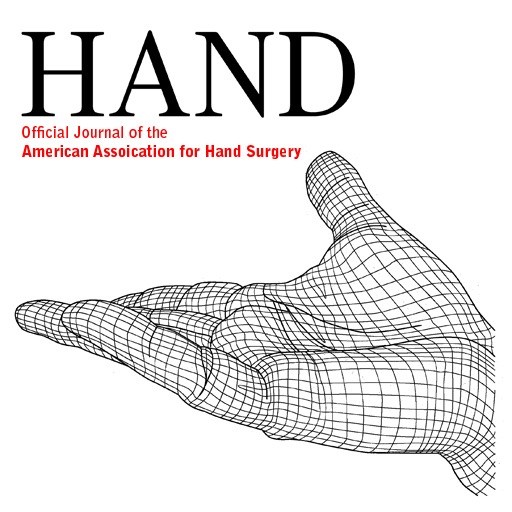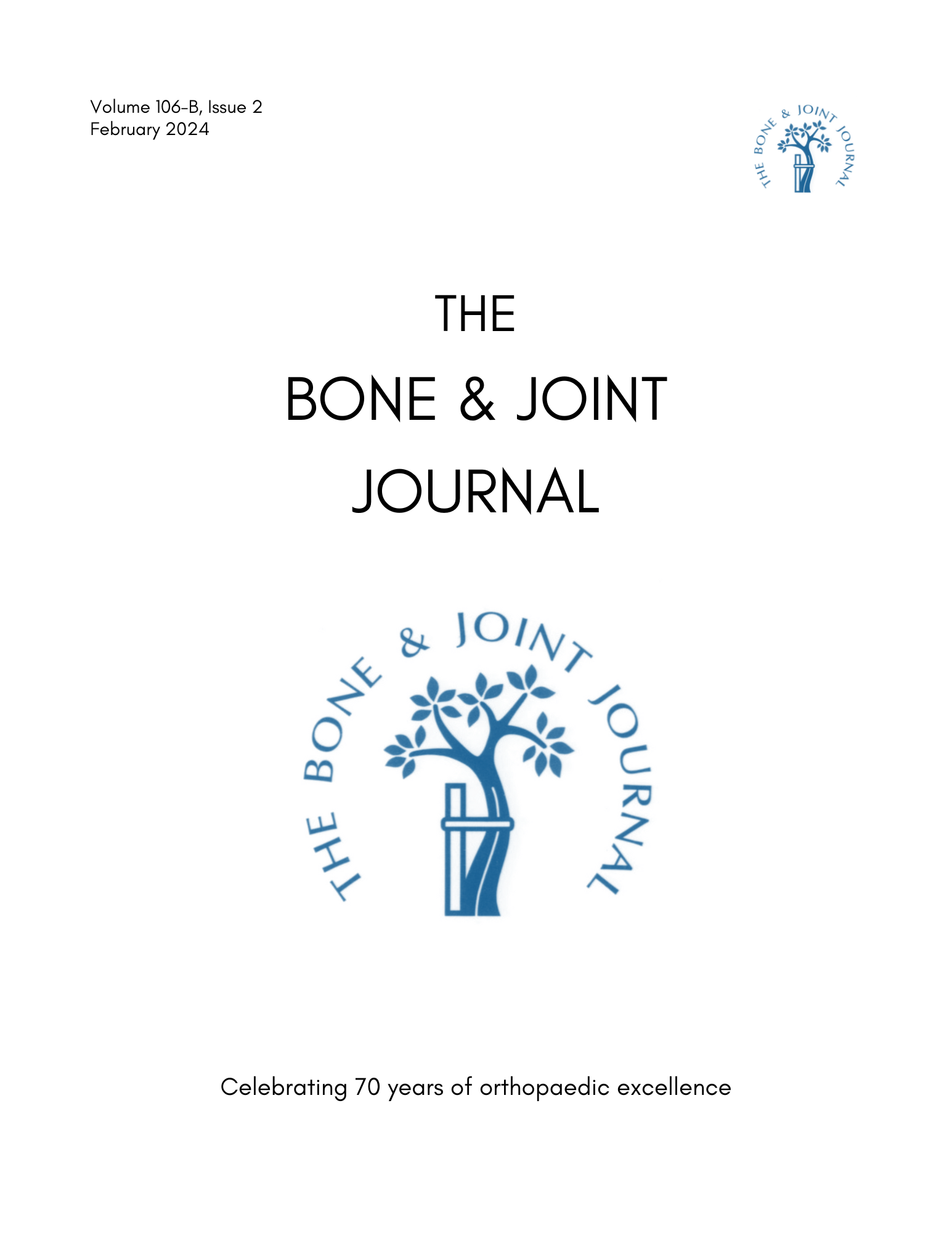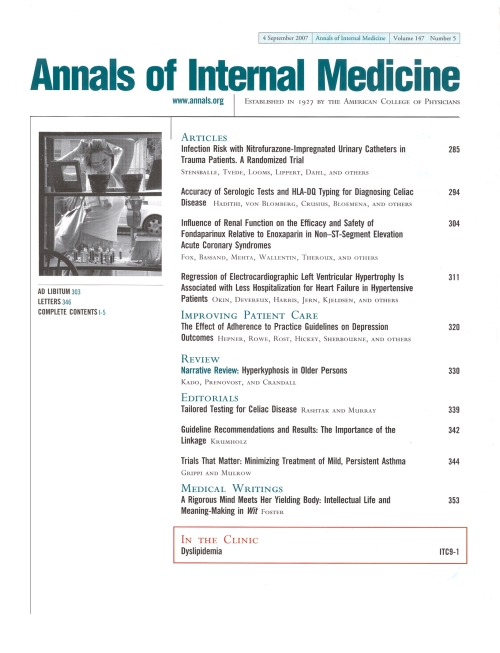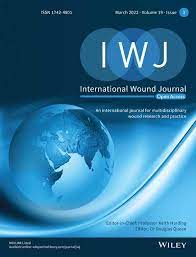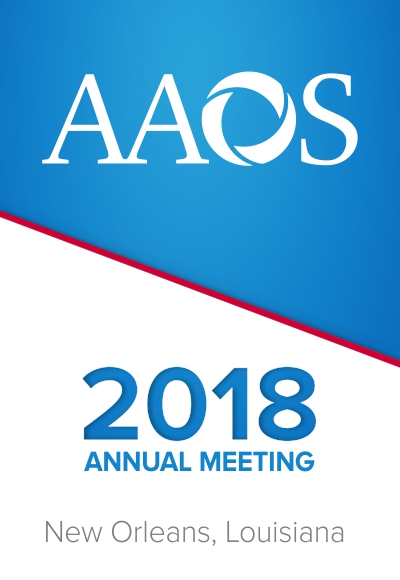PeerView
You are viewing the most viewed ACE Reports by Orthopaedic Resident/Interns over the last 30 days in all specialties.
Displaying
100%
①
Synopsis:
23 randomized controlled trials (2284 patients) comparing open versus endoscopic techniques for carpal tunnel release in patients with carpal tunnel syndrome were included in this systematic review and meta-analysis.A subgroup analysis was also conducted on single- versus dual-portal endoscopic treatment.The primary outcomes of interest included complication and reoperation rates.Secondary outcomes included operative time, the incidence of scar tenderness and pillar pain, normalized satisfaction scale, the incidence of complete or near complete symptom relief, Boston Carpal Tunnel Questionnaire (BCTQ) symptom and function, and time to return to work.All outcomes were similar between the two groups except for time to return to work and incidence of scar tenderness (dual-portal vs open) which all favored the endoscopic group.The incidence of nerve injury was significantly lower in the open-technique group. Overall, the endoscopic...
Read More »
Level 1 Meta Analysis
①
Synopsis:
Two hundred and sixteen patients with advanced osteoarthritis scheduled for primary total knee arthroplasty (TKA) were randomized to receive one of three TKA prosthetic designs from the same system: cruciate-retaining (CR; n=72), anterior-stabilized (AS; n=72), or posterior-stabilized (PS; n=72).The primary outcome of interest was the mean score of all five subscales of the Knee injury and Osteoarthritis Outcome Score (KOOS) measured at a two-year follow-up appointment.Secondary outcomes included individual KOOS subscales, Oxford Knee Score, EuroQol five-dimension health questionnaire, EuroQol visual analogue scale, range of motion, and patient satisfaction.Outcomes were assessed up to two years postoperatively.Overall, patients reported similar levels of pain, function, satisfaction, and general health in all three prosthetic design groups. However, the PS...
Read More »
Level 1 RCT
①
Synopsis:
One hundred and ninety four patients with operative ankle fractures were randomized to undergo early weightbearing (EWB) at 2 weeks postoperatively (n=95) or nonweightbearing (NWB) (n=99) until 6 weeks postoperatively.This was a noninferiority trial design.The primary outcome of interest was the mean difference in the Olerud-Molander ankle score (OMAS) between the two groups at 12 month follow-up.Additional outcomes of interest included time to full weightbearing, time to return to preinjury activities and patient satisfaction.The EWB group demonstrated a noninferior mean difference in the OMAS score when compared to the NWB group.There was no difference in the proportion of patients who were satisfied at 12 month follow-up.The EWB demonstrated shorter time to full weightbearing and return to preinjury activities than the NWB group (p<0.001). No differences in...
Read More »
Level 1 RCT
①
Synopsis:
One hundred and two patients with knee osteoarthritis who underwent total knee replacement were randomized into an intervention group (n=51) that received a digital technology package comprising an exercise app, fitness tracker, and online health coaching, while the usual care group (n=51) received a fitness tracker with notifications turned off.The primary outcome assessed at 3 months was mean knee pain (0-10 scale).Secondary outcomes included function, activity participation, and quality of life, which were measured at 3, 6, and 12 months.At 3 months, the intervention group showed small but not clinically meaningful pain reduction compared to usual care. The secondary outcomes...
Read More »
Level 1 RCT
①
Synopsis:
Three hundred and three patients with ankle osteoarthritis were randomized to receive either total ankle replacement (n=152) or ankle arthrodesis (n=151).The primary outcome of this trial was the change in the Manchester-Oxford Foot Questionnaire walking/standing (MOXFQ-W/S) from baseline to one year.Other outcomes of interest were MOXFQ-W/S, -pain and social interaction at 26 and 52 weeks, Foot and Ankle Ability Measure - activities of daily living (FAAM-ADL), and sport subscale scores at 26 and 52 weeks.Quality of life was also assessed using the EuroQoL 5-Dimension 5-Level questionnaire at 12, 26, and 52 weeks. Both groups saw...
Read More »
Level 1 RCT
①
Synopsis:
One hundred patients with ankle osteoarthritis were randomly assigned to receive either intra-articular platelet-rich plasma injections (PRP; n=48) or intra-articular placebo injections (n=52).The primary outcome was the patient-reported American Orthopaedic Foot & Ankle Society (AOFAS) score over 52 weeks.Secondary outcomes included various patient-reported measures assessing pain, function, quality of life, and indirect costs over the same period.The adjusted between-group difference for the patient-reported AOFAS score at 52 weeks favored the placebo group by 2 points (95% CI, 25 to 2; P = .31).With regards to secondary outcomes, there were no statistically significant between-group differences observed as was measured at 52 weeks post procedure. Overall, this indicates...
Read More »
Level 1 RCT
①
Synopsis:
Eight studies, including 615 patients who underwent total hip arthroplasty (THA), were analyzed in this systematic review and meta-analysis comparing the Direct Anterior Approach (DAA; n=303) to the Postero-Lateral Approach (PLA; n=312).Pooled outcomes of interest included surgical site infection rate, duration of the operation, length of incision, and pain scores using the visual analog scale (VAS) after surgery.The meta-analysis revealed no statistically significant difference in wound infections between DAA and PLA.However, DAA was associated with a shorter incision length, longer operative times, and lower postoperative pain VAS scores within 6 weeks. Additional research is...
Read More »
Level 1 Meta Analysis
②
Synopsis:
52 patients were randomized to receive one of two treatments for acute scaphoid fracture.One group underwent a surgical (internal fixation) procedure while the second group underwent a closed (cast treatment) procedure.The primary outcomes examined were total (indirect and direct) costs of either treatment as well as length of work absences.Results demonstrated that there was a higher total cost incurred from surgical treatment in both manual and non-manual workers. However, closed treatment...
Read More »
Level 2 RCT
Synopsis:
38 adolescents with 50 knees affected by Osgood-Schlatter disease were randomized to three monthly treatments of either prolotherapy with a dextrose solution, or so sham prolotherapy with saline.Patients were assessed for function on the Victorian Institute of Sport Assessment (VISA) score after 1, 2 and 3 months. Results demonstrated no...
Read More »
Conference Report
Synopsis:
Two hundred and seven studies with 32959 participants were analyzed in this network meta-analysis.The aim of this study was to compare outpatient treatments for managing acute pain from non-low back musculoskeletal injuries.Results revealed that the treatment with the greatest benefit was using topical nonsteroidal anti-inflammatory agents (NSAIDs).Afterwards, oral NSAIDs were beneficial which was followed by acetiminophen with or without diclofenac.The benefits included relieving pain 1-7 days, as well physical functioning , and symptom relief. Moreover, topical NSAIDs demonstrated increase in treatment satisfaction. Fentanyl and acetaminophen...
Read More »
Meta Analysis




 LOGIN
LOGIN


